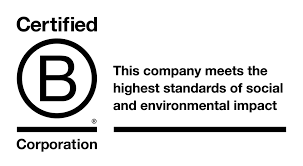The triple bottom line broadens your view of your company’s impact.
Many businesses focus on one thing – profitability (a.k.a. “the bottom line”). Recently, both business owners and customers are realizing that a single bottom line misses a lot of what they value. Some are now looking at a “triple bottom line.”
While profit is still important for any business, the triple bottom line brings in two more aspects of success. Here’s why it helps you see a bigger picture of business success and how it helps you achieve that success.
The Triple Bottom Line Definition
The triple bottom line is defined as having three components: People, Planet, and Profit. These represent the societal, environmental, and financial impact of business decisions.
Businesses focusing on a triple bottom line realize the “interdependency of all human relationships and interactions.” The company and its stakeholders (i.e., employees, customers, and society) are interdependent on one another to create a sustainable company.
The triple bottom line is defined as having three components: People, Planet, and Profit. These represent the societal, environmental, and financial impact of business decisions.
Along each step of the business cycle is an opportunity to make everyone’s financial situation (i.e. profits) better than before.
The triple bottom line methodology allows a company to:
- enhance marketing efforts
- improve financial performance
- meet their sustainability goals
It’s no question that companies attract top talent by promoting the benefits they provide to employees. We also see companies promote sustainability.
Not surprisingly, these companies are often some of the fastest-growing companies around. Their emphasis on employees, as well as the environment, attracts top talent and benefits more people. Many of these companies measure their success using the triple bottom line.
The Three P’s of the Triple Bottom Line

The triple bottom line consists of a social bottom line, an environmental bottom line, and an economic bottom line. This can be simplified by using what is known as the three P’s:
People – or the social bottom line
This is how a company treats its employees, customers, shareholders, and others in its community. To satisfy the social bottom line, organizations provide healthcare, participate in charitable events, and keep up with fair labor practices. Essentially, companies see an obligation to protect their people and those who may be affected by their operations.
Planet – the environmental bottom line
It’s no secret that people around the world have become more and more aware of their impact on the environment. Eco-conscious consumers are making big moves to support green, sustainable practices. They buy products from companies that exhibit environmental friendliness. Companies must commit to greener production methods and taking part in environmental initiatives.
Profit – the economic bottom line
A company needs to be profitable to succeed and to continue operating. However, with the triple bottom line model, companies are not just concerned with their own bottom line. They must also strive to create profitable environments for their partners, such as vendors and suppliers, as well as their employees. This ties in with the social bottom line, as a business will benefit from boosting economic growth in their own community.
Triple bottom line profits are measured in a much greater way than dollars added to the bottom line. Profit is simply one component of the reporting when it comes to determining the value created over time.
Triple bottom line profit can also be evaluated in terms of impact on economic growth, business innovation, and business decision making.
This includes maintaining company initiatives such as paying fair wages, providing benefits to your employees to promote wealth creation, and supporting local suppliers to enhance the local economy.
Even taxes support the common good of the community. Remember – I’m a CPA and many CPAs make a career helping people pay less taxes. No one likes taxes but everyone benefits from what taxes fund. Businesses suffer in countries with poor roads and schools.
How The Triple Bottom Line Creates Value

Value comes in many different forms and is defined differently for other people. A broader approach to measuring value provides more opportunity for a business to build value in the eyes of their customers and employees.
The triple bottom line is one method companies use to focus on multiple definitions of value. These companies measure that value growth by how it impacts people, how it’s affecting the planet, and how it impacts profitability.
While the triple bottom line may sound idealistic, there are many practical benefits for companies who employ this model. Some ways that the triple bottom line can add value to your business include:
A stronger team
Triple bottom line policies can be used as a recruiting tool to attract talent to a company. Being a company that focuses on the triple bottom line also gives employees a sense of shared focus in helping to make the world a better place.
Reduced turnover
Focusing on the well-being of your employees reduces employee turnover. Less employee turnover leads to reduced re-training and recruitment costs. Employees who feel valued by their organizations are less likely to jump ship for a better offer. Strong benefits, positive culture, and flexible work schedules cause employees to stay with a company.
Lower costs
In the long run, sustainable practices can lower production and maintenance costs. By committing to using fewer resources and reusing those that are available, firms can cut their overall materials costs. Green energy can be cheaper in the long run by requiring less maintenance and minimizing regulatory concerns.
Corporate reputation
Customers support companies that align with their values. Companies that focus on the triple bottom line generate goodwill with employees and customers. They raise their profile in both their local communities and the greater society. This can serve as free marketing for the company which will help to boost the company’s profits. Businesses who invest in their communities help to enhance the surrounding community. This has a rippling positive impact on the greater good.
How to Measure the Triple Bottom Line

Obviously, profits can be measured in dollars. How do you measure the social and environmental bottom lines?
There is currently no standard industry practice on how to measure the triple bottom line. Currently, companies must rely on input from their individual stakeholders, company data, industry data, and subject matter experts.
Here are some ideas on how you can measure your triple bottom line:
Stick with dollars
Since dollars are tangible, some believe you can monetize the social and environmental aspects of the triple bottom line. The problem is that it is difficult to place a specific value on the surrounding environment. And how do you put a dollar value on people?
Create an index
Many companies go this route, creating their own index for triple bottom line performance. This could be a score calculated by a formula that considers dollars, environmental impact, and social performance. The weighting of each aspect would be up to the company.
Multiple metrics
This involves creating a metrics dashboard of measures from each of the three categories. So, dollars would obviously work for profits. Scores for CO2 emissions, acres of forest used, and gallons of water saved serve as environmental metrics. From a social standpoint, consider employee retention and satisfaction metrics.
To learn more about how to create a metrics dashboard, check out my articles on how Key Performance Indicators Guide Your Company to Success.
What to Measure
Every company is different, but here are some more metric ideas from the Indiana Business Review:
People
- Average income per employee
- Charitable contributions
- Number of people contributing to 401k
- Benefit package costs
- Unemployment rates
Planet
- Consumption of utilities (water and electricity)
- Waste management
- Overall carbon footprint
- Fossil fuel consumption
- Land use
Profits
- Revenues per sector
- Taxes
- Average employee income
- Net income
- Underemployment costs
Another excellent source of metrics is Measuring Stakeholder Capitalism: Common Metrics and Consistent Reporting of Sustainable Value Creation. This report is a wealth of information by a team from the largest accounting firms. It groups metrics into four pillars: Principles of Governance, Planet, People, and Prosperity.
To B-Corp or not to B-Corp?

Business.com suggests that businesses who want to adopt the triple bottom line initiative should consider becoming a Certified B Corporation. This certification reflects your company’s commitment to your employees, customers, and the surrounding community.
In order to become qualified for B-Corp status, companies meet specific standards for environmental and social performance, sustainability, transparency, and accountability. There is currently a rigorous evaluation process that allows you to become a certified B-Corporation.
Even if you aren’t aiming for certification, the B-Impact Assessment is an excellent way to gauge how you’re doing on triple bottom line measures. The questions also provide specific ways for you to measure and monitor your triple bottom line.
Implementing the Triple Bottom Line at Your Company

Implementing a new initiative is not easy, but there are some things you can do to get everyone on board with triple bottom line concepts. It’s entirely up to you how thoroughly you implement the triple bottom line.
Invite Discussion
Discuss aspects of the triple bottom line with employees, customers, and stakeholders. You might use a survey. Find out what they value most in the triple bottom line. This can provide valuable insight into what metrics to monitor and how to ease into the new model.
Start Slow, Start Small
Quick, drastic changes can lower morale and cause confusion. Take small steps – explaining them to employees and customers along the way – to push towards a larger goal. Something like offering time off for volunteer work or encouraging donations to nonprofits can go a long way.
Highlight the Value of the Triple Bottom Line
Ultimately, people have to be shown value to change. Highlight success stories from other organizations. Show your community’s importance to the company’s success.
Defining Your Bottom Lines
The triple bottom line is just one way to look at success beyond profit. Small business owners can define success in many ways. My Creating Value course helps you clarify your definition of success.
For more info, check out these topics pages:
